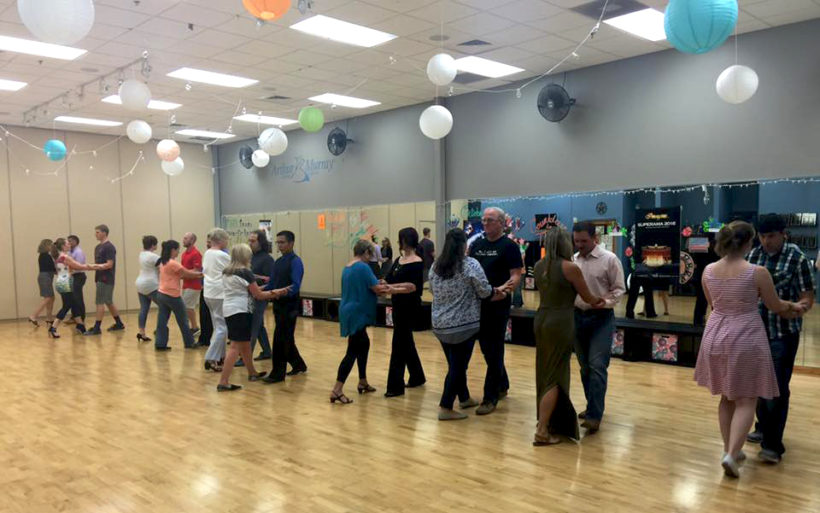By C. Rothschild
In 1976 I was 40 years old, and after a long consultancy for the Swedish Government, I went to Helsinki, Finland. I was invited by a good friend, a Finnish sociologist with whom I had collaborated in the past. She wanted me to actively participate in a study of the social experiment of afternoon dances and write my overall impressions.
At that time, 700 restaurants all over Finland offered afternoon dances. There were two types of afternoon dances, for the middle class and another for the working class. Participants could come alone or in groups. Women more often than men prefer to go with one or more girlfriends. Middle-class people, who were not usually physically tired from their workday, often went dancing after work, around 4:00-4:30.
Music was played by a live band satisfying different dancing preferences ranging from tango, foxtrot, and waltz to swing, samba, rumba, and rock-n-roll. Usually, in the beginning, the music was slow, stylistic, and formal and gradually became freer and the dancing more informal. Married women and fewer married men came clearly only to dance and were not interested in developing relationships. In this way, women with husbands who did not like dancing had the opportunity to enjoy dancing without doing anything that could be considered improper.
More than a third of those attending did so clearly for the sake of dancing without any other expectation. Those participants didn’t want even a friendship. They would return home around 6:30 because it was just dance and go. It was a brief dancing relationship.
Men tend to more often choose women already asked by other men; they were considered more desirable. That’s a common man’s behavior: man always wants what other man wants. I noticed that young women in their 30s and 40s asked pensioners in their 70s. Unfortunately, the same trend did not hold for elderly women. There were no women in their 60s or 70s. No one. Sex discrimination holds true even in this context.
The rules as to whether men or women could ask someone to dance differed from place to place, from day to day, and sometimes from hour to hour. Women asked men mainly during the first dancing hour. It was then more acceptable for women to ask men to dance without feeling unwanted. Later, however, it became more difficult for women to justify their behavior when practically all men had got up and asked women to dance. Overall, women’s chances to be asked by a man or choose a dance partner were somewhat improved because slightly more men than women came to afternoon dances (on average, 57% of clients were men).
Along with my colleague, who had invited me, and another woman professor, at 4:30 p.m., went to a middle-class restaurant where both men and women could initiate the dance. During the first half-hour, I felt uncomfortable and uncertain how this situation would work out. I felt uneasy about asking a man to dance with me, afraid of rejection. I finally asked a young man in his late 20’s, who was sitting alone looking sweet and a little sad. Unfortunately, he did not speak English, and the dance was a slow foxtrot that I did not like. I felt tense. I did not follow well and was afraid I was a disappointing partner. Trying to feel more comfortable, I occasionally practically led him. I was unhappy with this first dance, but I felt much better when the same man asked me to dance a rumba a little later. This reassured me that, after all, he had liked dancing with me.
Those staying until 7:30 flirted, touched, and even kissed. The atmosphere had changed, and we left the place. I was told that those who stayed on until 10:00 or 11:00 p.m. were interested in dating.
We proceeded to a working-class afternoon dance with a completely different atmosphere the next day. There was clearly more directness expressed by women who wanted to dance. They did not play the “prim and proper” role of feigned indifference and respectability when they were dying to dance. They looked straight at any man who got up to indicate that they were available. Overall, there was a warmer and more informal ambiance. However, men seemed to follow the usual competition angle, and women became more desirable dance partners if they had been chosen by other men.
I was asked to dance by a Finnish sailor, who got excited upon learning I was Greek because he had visited Greece and liked it very much. He talked endlessly, wanting to know everything about me.
My overall impressions were positive, if not enthusiastic. The pleasure of this type of social dancing would benefit many people and lighten their disposition. Many European countries such as Germany, the Netherlands, and the United States would be great candidates for social dancing. It would help decrease neuroses and mental illness. This was a recommendation I made in 1976. Now all this is in the past. Even in Finland, where most people receive vaccines, only a few highly regulated afternoon dances exist. The pandemic has scared people, and most would not be in a dancing mood. Moreover, wearing a protective mask would certainly deter spontaneity and fun. For now, I do not go dancing, but I make the movements with music to keep alive.
The End.
Rothschild, a former professor at the University of California, Santa Barbara, and consultant to the UN and other international organizations. She has written three books on Sex Roles and Sex Discrimination, two of which were used as textbooks in American and European universities and were translated into Swedish and Japanese. Her literary work is available in the 34thParalell Magazine and the Winter Anthology of Quillkeepers Press.






